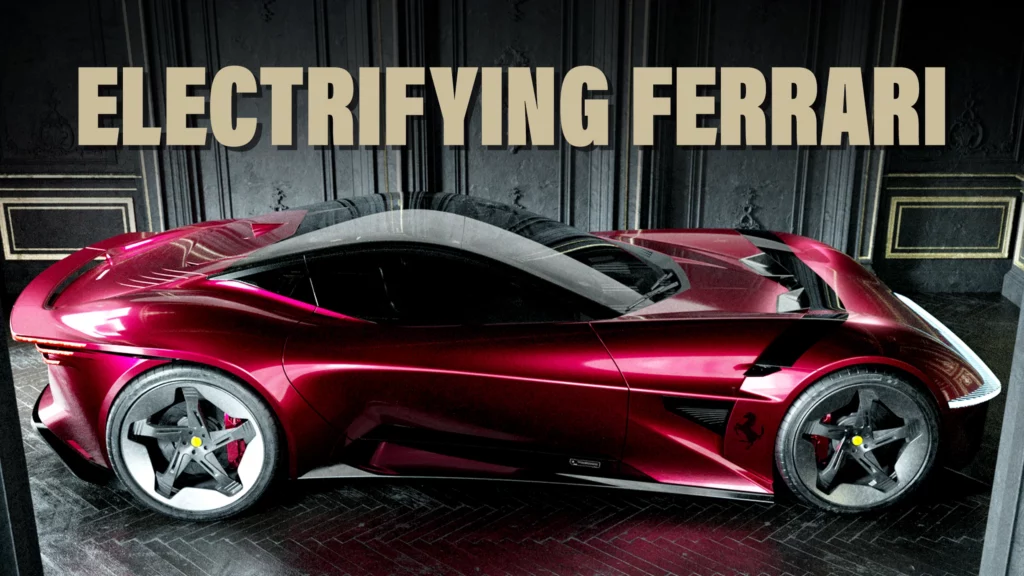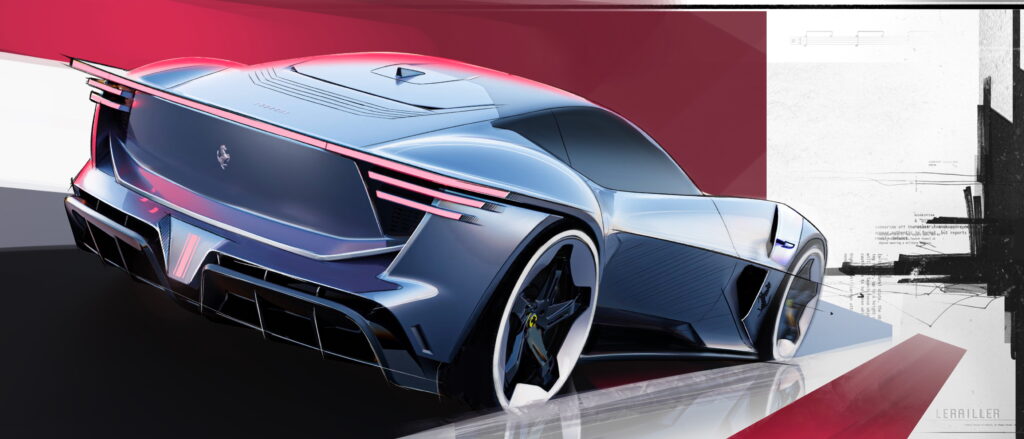The Ferrari Alto has a radical and modern design that could make it the brand’s perfect electric GT
3 hours ago
 –>
–> 
–>
Ferrari is hard at work readying its first battery-electric vehicle for production in 2025. At this stage, little is known about the car but these renderings showcase one design direction Ferrari could take if it decides to make its first EV a Grand Tourer.
This creation is the work of designers Alban Larailler and Alexandre Bernini, both 5th-year design students in Italy. The car is dubbed the Ferrari Alto and looks to provide more emotion than an ordinary BEV, making it more fitting for the Prancing Horse badge.
Perhaps the most intriguing element of the car is found up front. Hidden beneath the grille is a unique shroud around the electric motor that essentially turns the car into a wind instrument depending on how quickly it is moving. This may not be quite as evocative as an all-singing, all-dancing naturally-aspirated V12 but it certainly seems intriguing.
advertisement scroll to continue
Read: Tech Industry Secrets From Silicon Valley Drive Ferrari EV Development

Visually, the Alto shares very little in common with any current Ferrari models. The front end is very sharp with a pronounced splitter and an LED light bar stretching the full width of the fascia. The dramatic bodywork continues along the sides of the car with striking front quarter panels and curvaceous door skins completely free of traditional wing mirrors.
We’re particularly fond of the of the rear end where you will notice an LED light bar, individual LED taillights, and an F1-inspired third brake light just above the bold diffuser.
Ferrari is remaining tight-lipped about its first EV and will likely continue to do so until it is ready to unveil it to the world. Late last year, the firm’s chief executive Benedetto Vigna revealed that he had already driven a prototype of the EV. In 2023, it was also revealed that Ferrari had filed a patent for an intriguing sound “reproduction device” that could amplify the sound of the electric powertrain and send it out of a speaker near the rear axle.
Note: The design study in this story is not affiliated with or endorsed by Ferrari.
 –>
–>